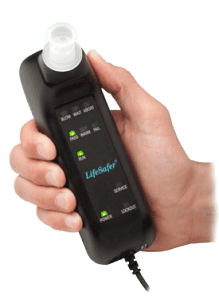 You are more likely to see an ignition interlock device these days and not even realize that’s what you’re looking at. Part of that comes from your sober driving record (because why would you need one?) while the rest is probably because there are so many names for the devices. Depending on where in the U.S. you live, an ignition interlock may have a different name, but they all work the same: to keep a drunk driving offender from making another mistake while under the influence of alcohol.
You are more likely to see an ignition interlock device these days and not even realize that’s what you’re looking at. Part of that comes from your sober driving record (because why would you need one?) while the rest is probably because there are so many names for the devices. Depending on where in the U.S. you live, an ignition interlock may have a different name, but they all work the same: to keep a drunk driving offender from making another mistake while under the influence of alcohol.
In other words:
- Your alcohol car starter keeps your car from starting if you’ve been drinking alcohol by testing a breath sample for the presence of alcohol.
- Or, your car breathalyzer tests your breath sample for alcohol to make sure you are safe when driving.
- An ignition interlock locks you out of driving your vehicle if alcohol is detected in the breath sample you submit to the device.
- They’re also referred to as IIDs (Ignition Interlock Devices) or BAIIDs (Breath Alcohol Ignition Interlock Devices)
When a person blows into the device, it measures his or her blood alcohol concentration (BAC). If that BAC reading is at or over the pre-set limit (usually .02- .025 percent BAC), then the device will not allow the vehicle to start. Once a vehicle is in motion, the ignition interlock, alcohol car starter or car breathalyzer will require periodic BAC tests. That ensures the person driving remains sober behind the wheel and that they didn’t have someone else blow into the device when starting their vehicle.
All states have some type of ignition interlock requirement after a drunk driving conviction, and some even require the devices through the DMV or an administrative policy. Depending on where you live, that device likely has a different name, so you may call it a car breathalyzer, alcohol interlock, “blow and go,” ignition interlock or any variation. But no matter what you call it, it is an effective solution for preventing future drunk driving incidents after a DUI.

Leave a Reply
You must be logged in to post a comment.